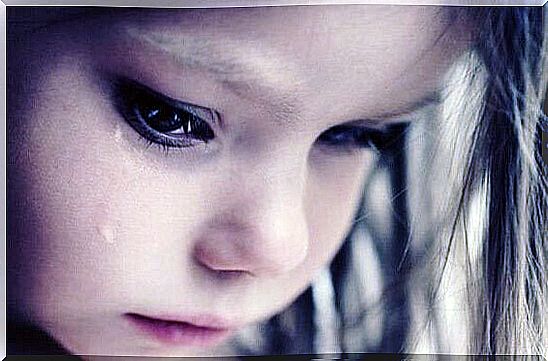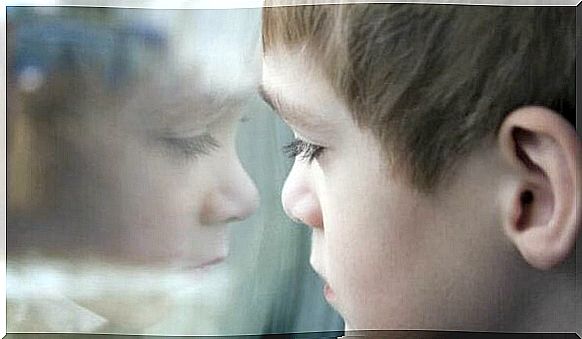Interpersonal Bonds And The Fear Of Being Abandoned

We want to feel safe and secure in all areas of our life, because this is essential in order to feel good. Especially in relationships we show a great need for love and security. When we feel safe, then we can feel protected and also have confidence. However, when this security is threatened by the ghosts of the past, we will react with fear. In fact, we are then very afraid of being abandoned.
The insecurity that fear of abandonment creates can poison a relationship. This is especially true when the origin of our fear lies in a difficult childhood. Having this obsessive fear can inadvertently damage our relationship and only confirm the partner’s assumptions that they may have already had about us. On the other hand, the relationship can become so devastating that both partners get caught in a spiral of suffering and discomfort.
It is normal to occasionally have doubts that our relationship is working well. But being suspicious and overreacting over and over again because one is afraid of being abandoned leads to discomfort and instability in a relationship. So let’s take a closer look at where the fear of abandonment comes from.
The importance of attachment
In our first year of life, we create an emotional bond with our closest caregiver. Through this relationship and the type of bond we develop with it, we acquire a range of emotional skills. We use this in our future interpersonal relationships.
But if this bond does not take place in the first few years of life, it can lead to great problems in our future. If this was the case in our childhood, then we had to learn to grow up at an early age. Conversely, this can mean that we quickly feel unprotected and insecure or even become more suspicious of others. These are consequences explained in Bowlby’s attachment theory. John Bowlby drafted this theory to explain why many people feel a deep sense of abandonment despite being surrounded by loved ones. Let’s look at an example to better understand Bowlby’s theory.

The hungry baby
A baby is hungry because it has not eaten in several hours. His instinct tells him that it is hungry. However, the only thing the baby can do is cry. His mother, in this case the closest caregiver, captures the signals the baby sends out to show that he is hungry. The mother has learned to recognize and accept the physical and emotional needs of her baby. She will restore both the baby’s physiological and emotional balance through her actions.
If the baby continues to have these types of experiences, they will regularly seek physical closeness with their mother. It trusts that it will calm it down and restore its balance. Later in development, the child will be able to endure uncomfortable experiences simply because of the fact that they see their mother coming towards them. The same applies in the event that the mother goes away and says: “I’ll be right back.”
If a similar situation occurs as an adult, that person does not panic. Because he knows that in a few hours he will see his partner or friends again. He has learned to endure this situation because he knows that his feelings will not be permanent ones.
If we did not have this experience in childhood, then we will find it difficult as adults in such a situation. We won’t feel safe in an intimate relationship because we haven’t learned to build trust.
In addition, the absence of human contact and lack of care leads to higher production of adrenaline. This predisposes us to aggressive, impulsive behavior and makes it difficult for us to control our emotions.

The emotional wounds of being abandoned in couples
As we can see, there are emotional wounds that were inflicted on us in our childhood that are still lurking within us. These wounds can affect many areas of our life. Many unpleasant situations that we experience in childhood leave their mark on us. If left untreated, they can make a big impact on us in the present.
Bowlby found in his attachment theory that the emotional bonds formed in childhood persist in the adult world in the form of models. This has also been confirmed in studies by Hazan and Shave. The two researchers showed that adult behavior forms in relationships based on the perception and thought patterns created in the relationship between the child and his or her parents.
So we see that the fear of abandonment in relationships can have roots in childhood. They are the ghosts of the past returning. Then we are haunted by our own insecurities. They try to remind us that we are not worth finding love or being treated well.
Emotional bond
A word, a place, a certain behavior or memories are enough to create an “emergency situation” in us when we suffer from attachment fears. This is usually followed by a whole avalanche of emotions and behaviors that we as sufferers display. For example apathy and sadness, to name just two.

In addition, sufferers usually develop an emotional dependency on their partner. You need the constant approval of the loved one. Even if their relationship is toxic, those affected are unable to end it or cannot distance themselves. When we are affected, we assume we would be nothing without the partner. We believe we have to do absolutely everything to keep the relationship going. We only do this so as not to reopen the wounds from our childhood.
In some cases, this fear of abandonment creates a kind of addiction for lack of self-worth and a longing for degradation. Since we don’t feel wanted or safe, we need to get confirmed that our identities are still intact. Therefore, when we finally find protection and security in a relationship, we may not believe our happiness at all and reject it. All of this can be traced back to deep-seated emotional wounds.
The fear of being abandoned
The fear of being abandoned is a very deep emotional wound that we were inflicted on in our childhood. The healing of this wound requires acceptance of one’s past as well as active forgiveness in order to let go of this painful past. This is a complex task. Especially when we don’t know how we have been conditioned by our previous experiences. It is difficult to break through the protective mechanisms we have built for our injured selves.
Indeed, in very complex cases, it is advisable to go to a psychologist. He can help us and initiate the first important steps. Another aspect that needs to be worked on is our self-esteem. It is usually fragmented, maybe not even there. Learning to appreciate yourself is essential to escape the trap of emotional addiction. Additionally, with greater self-esteem, it will be much easier to manage the emotions and thoughts that are anchored in our past experiences.
Change our emotions
Feelings such as anger, resentment, fear or sadness are very common in people who are afraid of being abandoned. But we have to learn to reduce their intensity and try to decipher what these feelings really mean. When we do this, we can turn our negative emotions into positive feelings.
Negative thoughts and expectations are also elements that need to be taken into account. Mostly it is our thoughts that influence or increase our fears. They make this fear problem seem insurmountable. If we are afraid that our partner will leave us, we will examine his behavior and his words for a hidden meaning. We will often misinterpret them, which leads to the fact that we only confirm the fears within us.

As we can see, healing the fear of abandonment involves a process of rebuilding. This is a process that takes time. We have to learn to recognize our fears. There is also something we must not forget: on many occasions, what we think of our environment is nothing more than a projection of what is happening within us.
Should you, dear reader, suffer increasingly from the fear of being abandoned and should this lead to problems in interpersonal relationships, it can be helpful to get therapeutic help.









